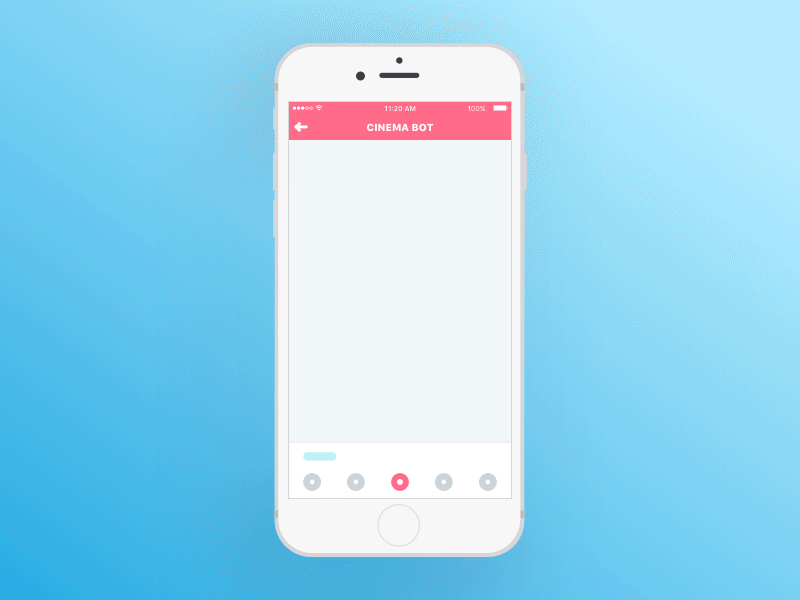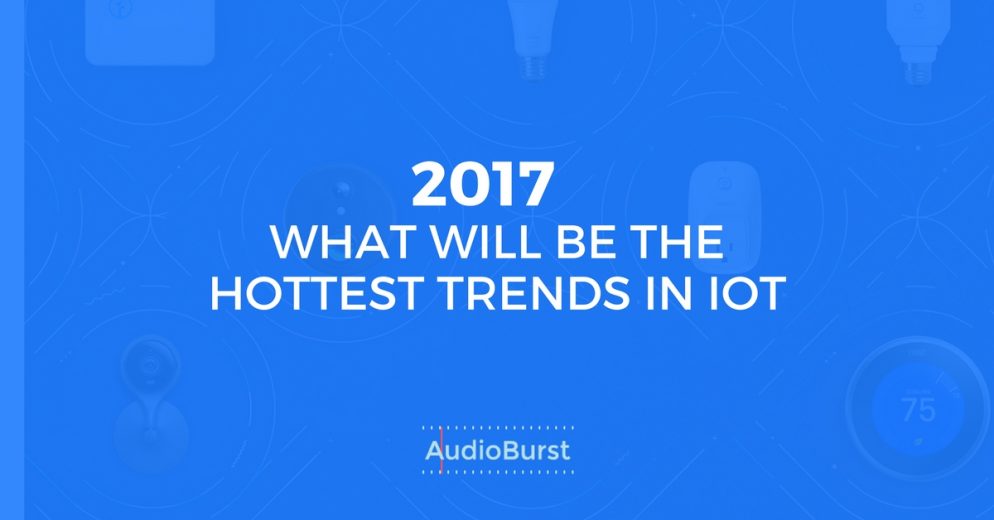2016 was huge for the ‘Internet of Things’ space.
What was once an obscure futuristic vision has gone mainstream and even affordable.
In 2014, the Internet of Things was just a phenomena to look out for. Now, only two years later, it seems like it is already here and it’s revolutionizing almost every area in our lives.
If you’re not sure what products fall into the IoT category, SpiceWorks has a good definition for it:
The IoT universe contains any device, appliance, or sensor that’s connected to the Internet — from thermostats and cameras to newer iterations like smart watches, fitness monitors, and appliances.
Here’s another definition you can use:
“The Internet of Things (IoT) involves embedded computing devices interconnected with the existing Internet infrastructure. Examples include automobiles with built-in sensors; smart thermostats; and home appliances that are networked for remote monitoring.”
Predictions say that by 2020 (Only three years away!) there will be 34 Billion devices connected to the internet. 24 Billion accounted to smart devices while traditional computing (PC, phone, and tablets) will account for 10 Billion.
Before we jump into 2020 (Is Kanye president yet?), let’s review what are the biggest trends in IoT to expect in 2017:
Companies will create smarter products
Whenever a new trend comes along, every company wants to jump on the wagon and make sure they capitalize on the newest trend.
On the one hand, it’s part of what helps new tech become affordable faster, but it pushes the company into creating a lot of useless or low-quality products.
Remember when the Apple’s app store got it? Every company decided they need to have a branded app. The result was a lot of branded apps (sometimes in a buggy going HTML5 format) that were rather useless. They didn’t add any value to the user. But everybody had an app.

The Same thing is happening now with “smart” and “connected” devices. We still haven’t got to the phase where product makers understand that the fact that something can be ‘connected’ – doesn’t mean it should be.
In 2017, the initial rush will slowly decrease, and companies will have to start looking beyond the trend and gimmick and will need to understand the value a user can produce from their connected device.
Artificial Intelligence (with Machine/Deep Learning) and conversational interfaces.
Artificial Intelligence is the hottest trend right now. Within that trend, Chatbots and conversational interfaces are where the action’s at.
Utilizing machine learning, big data, and an impressive new screen less interface experience, companies can deliver a unique personalized user experience to their users while gaining a lot of data back.
It’s no surprise that predictions say that AI investments will triple in 2017. The data is a gold mine.
All major tech companies have to push in that direction.
Ever since Apple launched Siri with the iPhone 4s, Apple, and other leading tech companies have started making us accustomed to having conversations with our mobile VA’s.
Siri, Amazon Alexa, Google Home, Cortana – they are all moving towards the conversational interfaces. Sure, Apple’s Siri wasn’t powered by AI at first, but still aspired to be conversational with the iPhone users. AI & machine learning is what pushed the conversational interfaces into the mainstream. Up until now, you wouldn’t be talking to bot and VA’s. You would trigger specific action using invocation. The VA didn’t understand you; it recognized a trigger.
In other words – you were learning to talk like a robot.

Now, your VA is learning how to speak to you. It’s analyzing and learning your voice; it gets a context, and it’s responses are based on real conversation. VA’s and Facebook chatbots are already trending, but we haven’t even scratched the surface of their potential. Regarding marketing and sales, AI will play a big role in the consumer experience as it will become more and more tailored and personalized
In 2017 will see this trend getting bigger.
Conversational bots and VA will keep getting smarter, more integrated with our day to day activities and will improve the way we experience the world thank to it’s highly personalized attributes.
Security will become more of an issue
As IoT goes more and more mainstream, internet vulnerabilities are becoming more dangerous.
With current IoT devices ranging from your thermostat at home to your front door lock, the importance of; limiting access and protecting your devices is more crucial than ever.
[bctt tweet=”The faster technologies evolve it’s harder to keep pace regarding security.” username=”Audio_Burst”]
This is the era where businesses collect more data than ever before. Yet, most companies aren’t able to keep up to date with recent security standard and protocols and are leaving their data vulnerable to hacks and breaches.
With the rise of IoT, our stored data becomes more and more personal – so any compromised data will mean more personal data that is exposed. From our daily habits, health condition, payments and more.
The second security challenge is coming from inheriting the structure of the IoT. As all these new connected devices are connected to the web through various means, this opens up business to whole new threats and vulnerabilities.
How many of you check that the public Wifi you’re connected to is secure? Did you know that a good hacker (not even a great one) can fool your computer to share your FB password with him simply by being on the same Wifi and a few lines of code? More connectivity means more vulnerability.
In 2017 we will start seeing more attacks on IoT products and we will probably see the first “anti-virus” companies rising in this space as well.
Driverless cars will not go fully mainstream yet
Tesla, Google, Uber and rumors say that Apple as well, are all focused on creating fully automated cars.
Pilots for automated vehicles have already launched, and it seems like technology is already there.
In 2017 we expect to see driverless cars start rolling into the streets and we will see how big cities face the challenge of incorporating the new technology into daily lives. The technical aspect might be resolved (or close enough to being resolved), but the impact is at a larger scale.
Driverless cars can mean reduction in car accidents caused by humans (think no more driving under the influence accidents etc.). It might also have a serious financial impact – fewer fines and tickets, maybe fewer people will buy cars for personal usage. Being a cab driver will slowly vanish etc. Instead of focusing on the complex effects of the self-driving cars taking over, watch this cool prediction on how the automated will evolve in 2017.

Waymo – The Google self-driving car project
B2B and B2C IoT will set apart even more
If media is any indication, it seems like in 2016 connected devices made their big entrance into the homes and consumer-facing products, but have yet to make a significant impact on old industries just waiting to be disrupted.
Think about areas such as Agriculture, health (already getting big), transportation, water, etc. Yes, first steps have already been made, but still, in most industries machines used are “dumb” in the sense of how they can communicate and leverage connectivity. In 2017, we expect to see more easy to implement, low-powered solutions that will bring old machinery and industry into the IoT world.
Integrations over features
Traditionally, product managers put their focus on next product features and how to evolve the product in its capabilities. In 2017 we will see more products evolve in a new vertical – integration and connectivity. You can already see this happening partially with platforms like Zapier and IFTTT that help existing products connect with others.
More and more products will be looking to develop not only features but how their features can connect with the other activities in your life and integrate with them in new ways. It’s a new vertical for product owners to look at.
Also, with the rise of ‘hub products’ (Google Home, Amazon Echo, etc.), we will see products integrating audio capabilities and creating services around that. A great example is Newton’s new Alexa skill. Where you can interact with your email via Amazon Eco. 2017 will bring more cross-platform integrations into existing products, and we will see more connectivity as innovation.

Amazon Echo Dot
Smart homes will become more holistic
Smart homes are already trending in 2016.
In 2017 we will see them go even more mainstream regarding pricing and variety of products.
Right now, most smart home products and devices are still stand alone. The trend will lean towards looking for a bigger infrastructure for them to communicate with other devices on. For example, platforms like Apple Home will become bigger, as they give smart products the option to communicate with one another.
The ability to create workflows and rules based on what you are doing or rituals that involve multiple products will become more dominant. The expectation of product to “understand” your needs over simply controlling them all from one remote will become more prominent.
We will expect to communicate with one device – but that device will communicate within the context of all other devices surrounding. It will be able to understand from your one command, what other settings need to be applied to all other connected devices.
For example, if you get a phone call, your house will understand it needs to lower the music in your living room, but also stop your blender or vacuum cleaner from working in the background. AI will also become more of a factor built into smart products, letting your home be more proactive towards your needs. For example, if you setup your alarm clock to 06:00 AM, it will already know that you take showers in the morning and will start the heater for you, so you’ll have hot water running at 06:15.
Now to you:
What trend are you excited about for 2017?
Is it an all-in-one voice activated home? Driverless cars driving you around your city?
Let us know in the comments!
Featured image: nest.com

